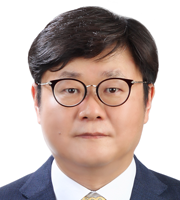
총회강연 및 정기총회
2020년도 세아해암학술상 수상자
10월 29일(목) 16:40-17:00 다시보기Computational Materials Science: focused on phase-field model and its applicationsComputational Materials Science (CMS) has received much attention as a robust tool to study various materials phenomena thanks to great strides in computer performance and materials theories. In this presentation, various methods of computational materials science are briefly introduced and the phase field model and its applications to various fields are reviewed. The phase field model is known as one of the most accurate computational methods to describe the interface dynamics. As the phase transformation proceeds by the movement of the various interfaces existing in the material microstructures, the characteristics of the phase transformation are governed by the thermodynamics and dynamics of those interfaces. Therefore, the phase field model can be said to describe all kinds of phase transformations most accurately. In this presentation, the brief introduction of the phase field model is given and the developments and applications of the phase field model conducted with our coworkers are reviewed briefly. The topics include peritectic solidification, austeniteferrite transformation and martensitic transformation in steels, particle-splitting in Ni-base supperalloy, grain growth and texture evolution driven by elastic interaction, etc. |
학력
- 1995 서울대학교 금속공학, 학사
- 1997 서울대학교 재료공학, 석사
- 2001 서울대학교 재료공학, 박사
경력
- 2001 ~ 2003 : Postdoctoral Research Associate, Seoul National University
- 2003 ~ 2004 : Postdoctoral Research Associate, Princeton University
- 2004 ~ 2007 : 조교수, 국민대학교 신소재공학부
- 2007 ~ 2014 : 부교수, 국민대학교 신소재공학부
- 2010 ~ 2011 : Visiting professor, The University of Texas at Dallas
- 2010 ~ 현재 : 정교수, 국민대학교 신소재공학부
- 2017 ~ 현재 : Editor, Metals and Materials International
- 2018 ~ 현재 : Review Board, 한국연구재단








